The Importance Of The Hare In Celtic Belief And Our Duty To Protect All Wildlife
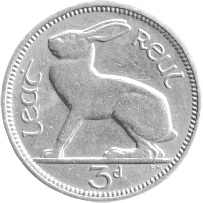
Landscape, seas and geographic location plays a pivotal role in Celtic peoples history, beliefs and recognition of themselves. Our culture tells us that we are part of and completely tied to the lands in which we live and the sea that surrounds us. Consequently, as might be expected, Celtic mythology and folklore place the natural world at centre stage. In these stories everything in nature possess a spirit and presence of their own, including mountains, rocks, trees, rivers and all things of the land and the sea. Also forming part of the landscape and stretching back into the mists of time are the cairns, mounds and standing stones that are to be found everywhere in the Celtic lands of northwestern Europe. So accepted as a natural feature that they are seen as creations not of man but of nature or even the supernatural entities that were thought to live alongside the world known to humans.
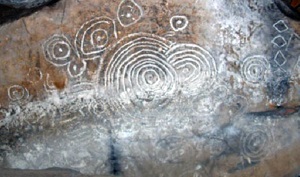
Megalithic monuments were not placed in a random way but were large ceremonial complexes constructed for specific purposes. We can deduce that astronomical alignments, both solar and lunar, were important factors in the positioning of these remarkable structures. We do not now know the belief systems of those who built them, perhaps they thought the constellations gave a special meaning to the world. Stone circles, cairns, other types of ancient stone monuments and Neolithic carvings have pointed to there constructors being skilled astronomers. Ancient stones and tombs are placed in a way that capture moments of astronomical importance. According to archeologists the ancient Irish were the first to record a solar eclipse 5,354 years ago. A geometric etching illustrating the eclipse is thought to lie inside the Cairn L. This is one of the two large focal monuments on Cairnbane West outside Kells in Ireland’s County Meath. The carving of concentric circles and lines is at the back of the chamber of the cairn. As reported in a previous article in the Irish Post:
It is thought to have been carved on 30 November, 3,340 BC, which fits the dates of the 92 solar eclipses in history tracked by Irish archaeoastronomer Paul Griffin. Experts at Astronomy Ireland have suggested that Neolithic astronomer priests made the carvings on stones and that it is likely the eclipse was viewed from the cairn.
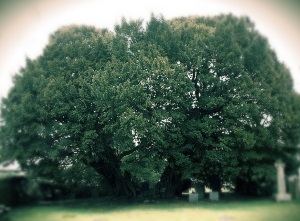
Although little if known about the motives of the people who constructed the great stone monuments. The Celtic people, over time, placed them within their own storytelling tradition and folklore. Seeing them as one of the entrances to the Otherworld where supernatural entities dwelt, including those associated with the Gaelic gods of the Tuatha Dé Danann. In Celtic mythology and folklore these manmade places ranked in importance alongside those of the natural world. Nature was paramount and the idea of animism (belief that non human entities have a spiritual essence), was widely held in the pre-christian Celtic pantheon and remains strong even today. Certain plants and animals hold particular significance; Horses, Cattle, Wolves and Ravens amongst many. Trees and flowers such as Oak, Holly, Apple, Hazel, Alder, Willow, Yew, Mountain Ash or Rowan and Elder. Different trees can have special magical properties depending on the particular Celtic nation. Although many hold special properties amongst all Celts such as the Ash, known in Old Irish as nin; Irish, fuinseog; Scots Gaelic, fuinnseann; Manx, unjin; Welsh, onnen; Cornish, onnen; Breton, onnenn.
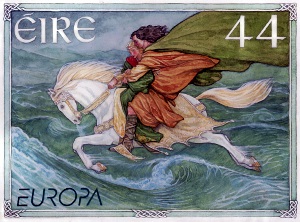
Rivers, lakes and waterfalls were also seen as very important and often associated with particular gods and goddesses such as Boann and Sionnan whose names live on in the Irish rivers of Boyne and Shannon. In ancient times objects were placed in rivers, bogs, lakes and springs as offerings. Amongst the animals held to have spiritual significance for the Celts was the Hare, (known to some in America as jackrabbits). The scientific name for the family group of rabbits and hares is Leporidae. Although hares and rabbits are in the same family they are different species. Generally hares are larger than rabbits, with longer ears, and have black markings on their fur. In the British Isles and Ireland there are three types of hares: the Irish Hare, the Common or Brown Hare and the Mountain or Blue Hare. They are generally herbivorous, have long-ears, are fast runners, and normally live alone or in pairs. Unlike rabbits hares do not bear their young below ground in Burrows, but in what is known as a form, which can be a nest of grass or a shallow depression. A hare less than one year old is called a leveret.
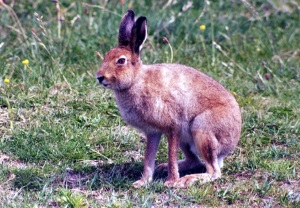
In Celtic mythology and folklore the hare has links to the mysterious Otherworld of the supernatural. The Irish hare is native to Ireland and carbon dating of fossils show they were present in Ireland as far back as 28,000BC. In Irish folklore the hare is also often associated with the Otherworld (Aos Si) community whose world was reached through mists, hills, lakes, ponds, wetland areas, caves, ancient burial sites, cairns and mounds. Those entities were seen as very powerful and the hares link to them sent a warning that those who harm them could suffer dreadful consequences. Shapeshifters were often said to take the form of the hare. There is a legend that the Celtic warrior Oisin hunted a hare, wounding it in the leg. Oisin followed the wounded animal into a thicket where he found a door leading down into the ground. He went in and came to a large hall where he found a beautiful young woman sitting on a throne bleeding from a leg wound.
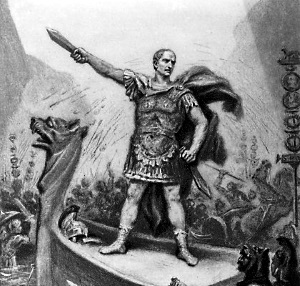
Celtic peoples looked on the hare as a creature with supernatural powers. This lonely creature was admired for strength, speed and was noted for being active at night and associated with the moon. They were seen as mysterious and magical, so thought of as an animal to be treated with caution. When the Romans invaded the British Isles, Julius Caesar made the observation that the Celtic people did not regard it lawful to eat the hare. In Ireland the animals association with women from the Otherworld who could shapeshift into the form of a hare also made eating them taboo. Its significance in Ireland was shown when for many years the Irish hare was depicted on the pre-decimal coin the threepenny piece. The hare has also featured in the mythology of other cultures for thousands of years. Including being associated with the Northern European Saxon Goddess Ēostre or Ostara. It has been said by some that Easter takes its name from the pagan goddess Ēostre as mentioned by the English monk Bede in his work ‘The Reckoning of Time’ written in 725AD.
The hare is a remarkable and beautiful animal. Unfortunately hares, in common with other wildlife, are under threat in a human dominated world at this time. The 2014 Living Planet Report by the World Wildlife Fund show that wildlife populations have halved in the last 40 years. The report states that:
The biggest recorded threat to biodiversity globally comes from the combined impacts of habitat loss and degradation, driven by unsustainable human consumption.
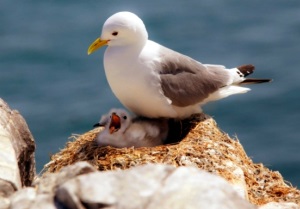
There has also been a dramatic decline in seabird populations. That was the conclusion of Canadian University of British Columbia (UCB) research. This showed that the world’s monitored seabird populations have dropped by 70 per cent since the 1950s. A UCB media release highlights the study of the Sea Around Us project and a report written on seabird population trends. They have compiled information on more than 500 seabird populations from around the world, representing 19 per cent of the global seabird population. They found overall populations had declined by 69.6 per cent, equivalent to a loss of about 230 million birds in 60 years.
The environmental destruction caused by world population growth is becoming ever clearer. Research shows that on current trends world food production will not be enough to meet the needs of the world’s growing population. The Science journal article 'World population stabilization unlikely this century' points to a study by the United Nations, which says there is an 80 per cent probability that by 2100 world population will increase from 7.2 billion to between 9.6 and 12.3 billion. Meanwhile and alarmingly the best that many politicians and economists can come up with is the notion of continued population increases as a means of securing economic growth. However, overdevelopment, exploitation, pollution and population growth increasingly encroach on the natural world. The more of us there are, the greater is our impact on the environment. It is now clearer than ever that an alternative economic model to the one of ever increasing growth is necessary. One that offers a long term perspective of real sustainability and both uses the world’s valuable resources to eradicate poverty and at the same time protect the environment.

Nature and the environment are not just issues related to ancient folklore and mythology for Celtic people. Although these stories do inform us of how important the balance between us and the rest of the natural world is to our culture. It is about how we work to protect natural habitats and our quality of life today and for the future. At this time there are pressures in all of the Celtic nations to drive forward policies that would result in significant population increases leading to environmental and cultural destruction. Wales, Cornwall and the Isle of Man have seen pressures to relax planning laws to allow innappropriate building developments that have to no regard to the impact on language, culture, local need and the environment.
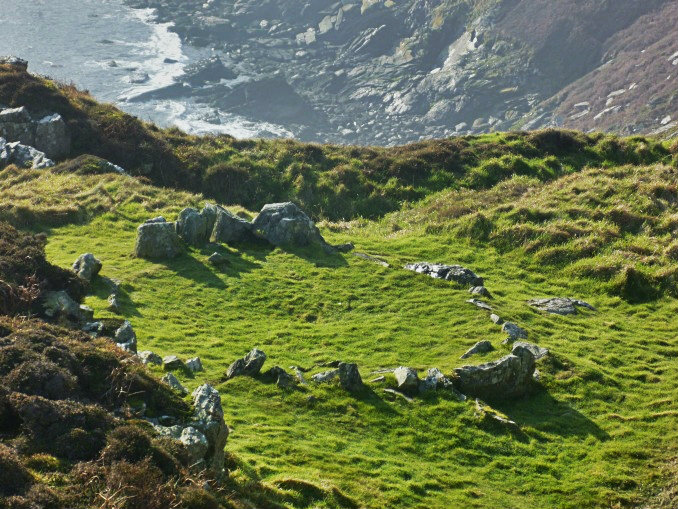
Make no mistake that those politicians that promote policies resulting in environmental destruction are falling under the direct influence of those driven by greed and who also have huge resources to back them up. In all of the Celtic lands and beyond we need to look carefully at what our local, regional and national political representatives are saying and doing about the issue. In particular we need to scrutinise their approach to any proposed damaging industrial and housing developments and populations increases that would encroach on wildlife habitats. Generations to come will not forgive us for standing aside and allowing further overdevelopment, overpopulation and the environmental vandalism that will inevitably follow.
Content type:
- Pan-Celtic
Language:
- English
- Log in to post comments






